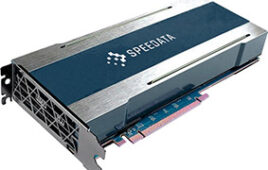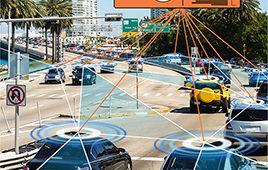One-armed Robots to the Rescue
Who doesn’t long for household help at times? At only 1.45 meters high, Care-O-bot 3 is a new prototype service robot designed to help humans in the household
 |
and to relieve us of heavy, dirty, monotonous or irksome tasks. The quick-learning robot was developed by research scientists at the Fraunhofer Institute for Manufacturing Engineering and Automation IPA in Stuttgart.
The one-armed assistant glides slowly to the kitchen table. With its three fingers, it carefully picks up the bottle of apple juice and puts it next to the glasses on the tray in front of it. Then it glides back into the lounge and serves the drinks to the guests. This is how artificial assistants might work in the future. But how does the robot know where to find the items it needs? And what has been done to make sure the robot does not inadvertently touch a human with its arm?
The Care-O-bot prototype is fitted with numerous sensors to prevent these scenarios from happening. Stereo-vision color cameras, laser scanners and a 3-D range camera enable it to register its surroundings in three dimensions, in real time. If a person moves into the radius of its arm, it stops moving. Another feature of the small, flexible helper is that it can move in any direction.
“This is made possible by an omnidirectional platform with four separately steered and driven wheels,” explains Birgit Graf, who heads the domestic and personal service robotics group at IPA. “In this way, the robot can even pass safely through narrow places in an apartment.”
The new robot has a highly flexible arm with seven degrees of freedom and a hand with three fingers. This allows it to pick up bottles, cups and similar objects and to operate machines. Force sensors prevent it from gripping too hard. The arm and the grippers were developed by Schunk. A tray is mounted at the front of the robot, on which it can carry items such as the requested cup of coffee. Integrated in the tray is a touch screen via which the assistant can be controlled.
“But the robot can also be directed by spoken commands. Unlike its predecessors, it can even recognize and respond to gestures,” explains Graf.
Numerous household articles are stored in the robot’s databases. It knows, for example, what a cup looks like and where to find it in the kitchen. It can also learn to recognize new objects. The user simply places the unfamiliar object in the robot’s hand so that it can gain a three-dimensional impression of the item.
However, the new robot does not look like a human being. “We deliberately moved away from the existing, humanoid service robots when we designed Care-O-bot 3,” stresses Care-O-bot-3 project manager Christopher Parlitz of IPA.




